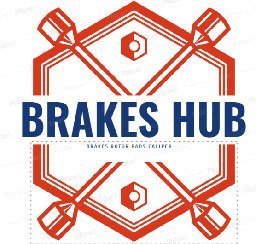How Do Power Brakes Work: A Basic Explanation
Have you ever wondered why it’s so easy to press the brake pedal in your car? That’s because of power brakes. Power brakes have been around for decades, but many people don’t fully understand how they work. Power brakes, also known as power-assisted brakes, work by using a vacuum created by the engine to amplify the force applied to the brake pedal. When the brake pedal is pressed, a valve opens, and the engine’s vacuum is directed to the brake booster. The booster amplifies the force applied to the pedal, making it easier to push down and providing more braking force to the wheels.
This system allows for smoother, more efficient braking and is present in most modern vehicles. Understanding how power brakes work can help drivers appreciate the technology behind their car’s safety features and may lead to better maintenance and care of the braking system. Now we’ll break down the basics of power brakes and give you a better understanding of how they help you stop quickly and safely.
How Does the Power Brake System Work?
Brake Boosters
The power brake system is comprised of a brake booster, which is a large canister that sits between the brake pedal and the master cylinder. The brake booster is responsible for increasing the force applied to the brake pedal, amplifying the pressure applied to the brakes.
Vacuum Pressure
Most power brake systems are equipped with vacuum-assisted brake boosters. The vacuum pressure is what makes power brakes possible. The engine’s vacuum is used to create a low-pressure area in the brake booster, which amplifies the force applied to the pedal. When you press the brake pedal, it opens a valve and directs the engine’s vacuum to the brake booster. This creates a low-pressure area that amplifies your foot’s pressure on the pedal, increasing the braking force.
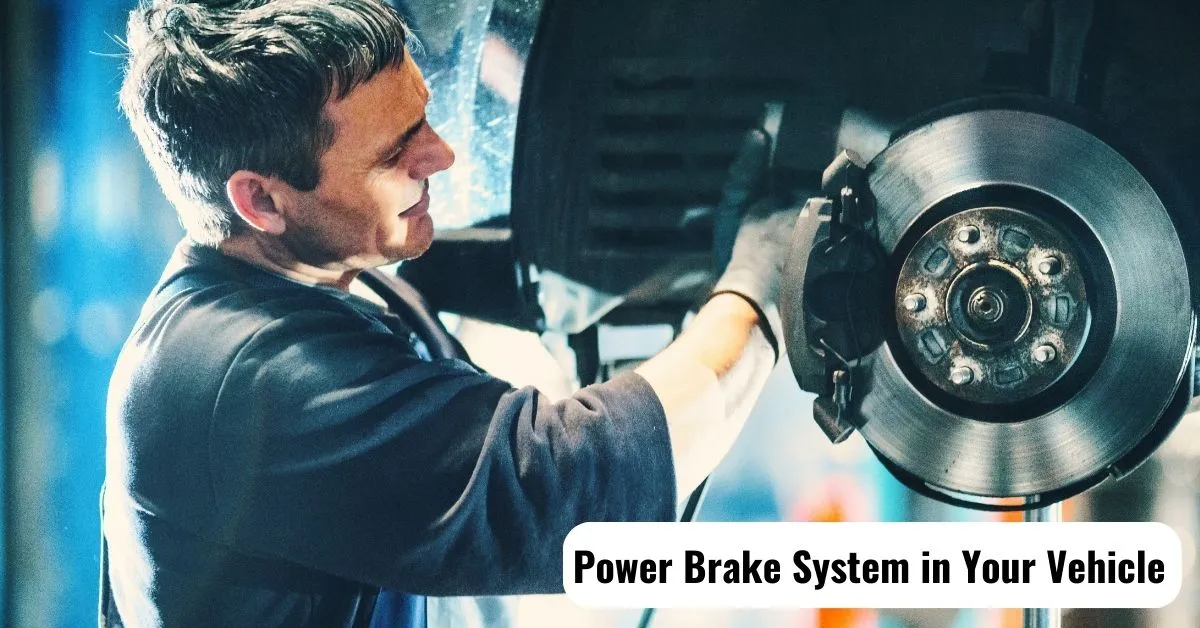
Master Cylinder
The master cylinder is the last component of the power brake system. It is responsible for taking the amplified pressure from the brake booster and transmitting it to the brakes. When you press down on the brake pedal, it forces a piston inside the master cylinder to move, creating pressure that is sent out to each wheel’s brakes. This force is then used to slow or stop your car.
Brake Fluid
The brake fluid is an essential part of the power braking system. This fluid is responsible for transferring the pressure created by the master cylinder to each of the individual brakes. The fluid travels through the lines connected to each wheel, where it acts as a hydraulic force to slow and stop your car. The brake fluid is typically composed of glycol-based liquids that are designed to be non-corrosive.
Power brakes are a crucial part of any modern vehicle and are responsible for making it easy to stop quickly and safely. By understanding how power brakes work, drivers can appreciate the technology behind their car’s safety features, as well as take proper care of the braking system.
Anti-Lock Braking System
Most modern vehicles are also equipped with an anti-lock braking system (ABS). This system works in conjunction with the power brakes to help prevent your wheels from locking up when braking. The ABS monitors wheel speed and applies the brakes in a controlled manner, allowing for smoother stops and better control of the vehicle. This is especially important on slippery surfaces, such as snow or ice.
What are the Benefits of Using a Power Brake System in Your Vehicle?
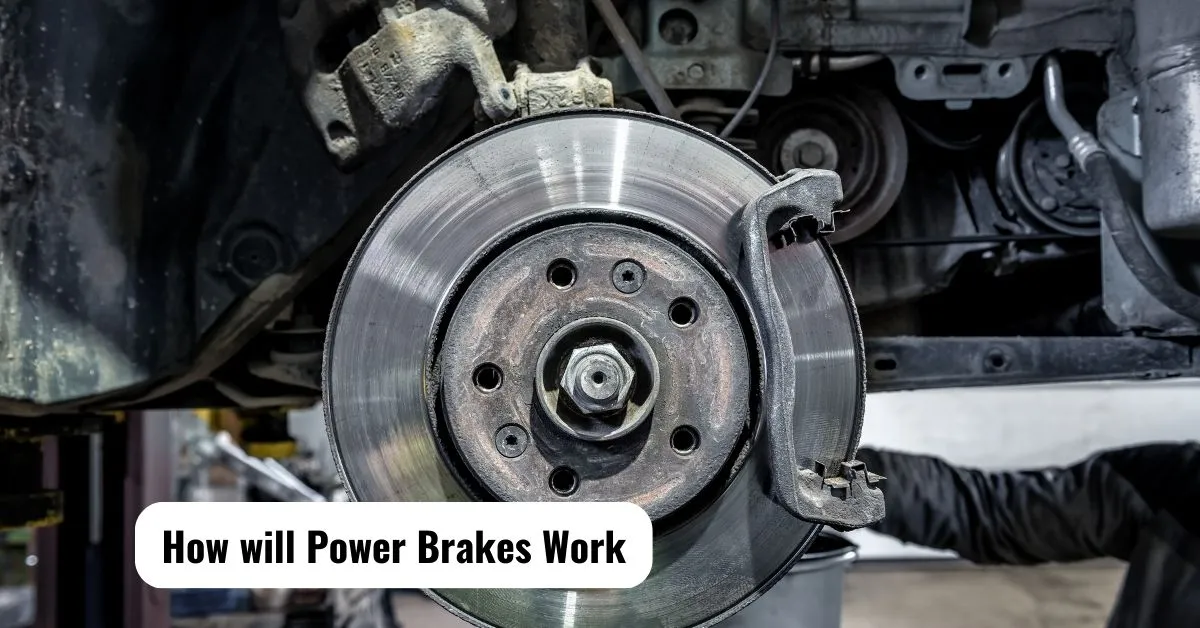
Power brakes are an alternative to traditional brakes, more commonly found in cars. It is important to note that power brakes come with a cost. They can be more expensive than traditional brakes, but they offer many benefits. These benefits include reduced fuel consumption, improved safety, and increased vehicle performance. The most common benefits of power brakes include:
Improved Safety:
Power brakes are an indispensable safety feature on modern vehicles, allowing drivers to stop quickly and safely. Power brakes offer you the ability to stop your vehicle more quickly and effectively, minimizing the risk of an accident. Thanks to the combination of the brake booster and master cylinder, as well as the fluid that transfers the pressure to each wheel, power brakes are able to provide enough force to slow or stop a car without locking up the wheels. The addition of an anti-lock braking system also helps maximize control in slippery conditions.
Consistent Braking:
Another advantage of power brakes is the consistent braking performance. Power brakes provide a consistent braking experience, regardless of the pressure applied to the brake pedal. This is because the brake booster and master cylinder work together to amplify the force applied to the pedal, providing a steady level of braking power. The brake fluid then transfers that pressure evenly to each wheel, ensuring that all four corners of your vehicle are slowing down at the same rate. This helps ensure a smooth and consistent stop, which is especially important in emergency situations.
Reduced Foot Fatigue:
For drivers, power brakes offer the benefit of reduced foot fatigue. With power brakes, you don’t have to press as hard on the brake pedal, since it amplifies the pressure applied to it. This is especially important for drivers who frequently travel long distances. By taking advantage of the power braking system, they can easily reduce fatigue and make their trips more comfortable.
In addition, power brakes are also more efficient than traditional braking systems. By amplifying the pressure applied to the pedal, they require less effort from the driver to create a stronger stopping force. This helps reduce fuel consumption by allowing drivers to brake more efficiently.
Better Control:
Power brakes also offer improved control. By providing a consistent level of stopping power, they allow drivers to slow their cars in a smoother manner. This is especially helpful when driving on slippery roads, as the anti-lock braking system helps reduce the risk of skidding and makes it easier to maneuver around tight turns. Additionally, power brakes can help reduce wear and tear on your car’s other components, such as the suspension and tires, by distributing the braking force evenly.
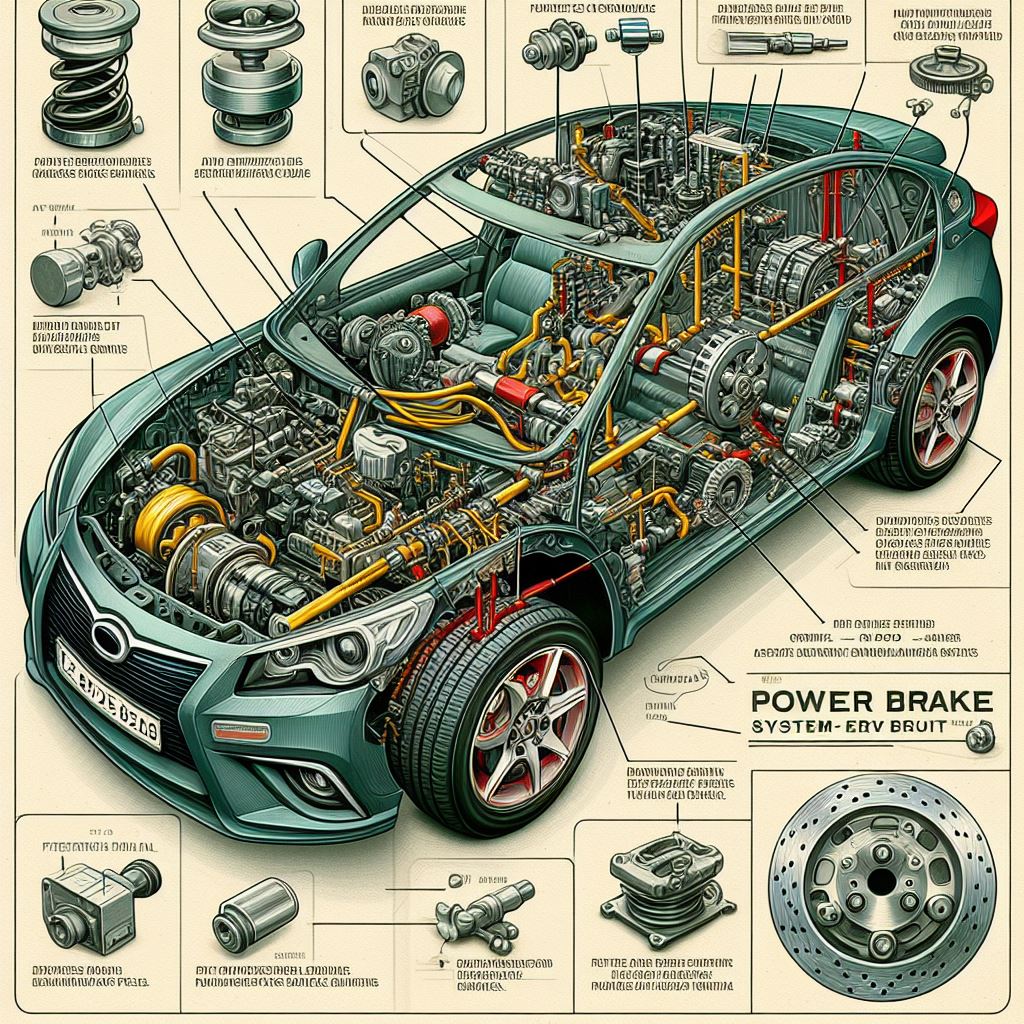
Overall, power brakes are an integral part of any modern vehicle’s safety features. By understanding how they work, drivers can ensure that their car is always in top condition and enjoy a smoother ride.
Longer Brake Life:
Finally, power brakes help extend the life of your vehicle’s braking system. Traditional brakes wear out more quickly due to their lack of amplification, and they also require more maintenance. On the other hand, power brakes are designed to distribute the force of the brake pedal evenly to each wheel, reducing heat buildup and minimizing wear and tear on the brake pads. This helps make them last longer and require less maintenance.
Improved Towing Capability:
Power brakes also offer improved towing capability. By providing an even level of braking power, they make it much easier to tow heavy loads without risking damage to your vehicle and its components. This is because the added weight of the towed load places a greater strain on the braking system, which can be more safely managed with power brakes. With traditional brakes, the sudden stop can be too abrupt for the trailer, leading to wear on tires and suspension parts. However, power brakes allow you to slow down gradually, making it much safer and more efficient to tow large loads.
Reduced Maintenance Requirements:
Power brakes are also easier to maintain than traditional braking systems. Since the pressure applied to the brake pedal is amplified, there is less wear and tear on the components of the braking system. This means that you won’t have to replace them as often, saving you both time and money in the long run. Additionally, power brakes require fewer adjustments, making them easier to keep in good condition. This means less frequent and less costly repairs and replacements over time.
Is my car equipped with power brakes?
To check whether your vehicle has power brakes, look for these features:
- A lever or pedal that operates the brakes instead of pushing them
- An indicator light that tells you when the brakes are applied
- A warning horn that sounds when the brakes are activated
- A switch that allows you to turn off the brakes
- A button or knob that activates the brakes
- A brake light that turns on automatically when the brakes are applied.
If you notice any of these signs, your vehicle probably has power brakes.
Key Components of How the Power Brake System Works on a Car
The power brake system is a system that uses the force of the vehicle’s engine to slow or stop the car. It comprises two components: the master cylinder and brake calipers.
Master cylinders control how much fluid pressure is applied to each wheel, resulting in each brake. Calipers are attached to wheels and press against brake rotors attached to brake drums. Fluid flows from the master cylinder into an orifice in the center of each rotor, then out through another on its outer edge, causing friction between them. This friction slows down both wheels at once.
The power brakes system can also be used as a parking brake by depressing one pedal while turning off the ignition switch. This will cause the fluid to flow directly into the brake pads instead of going through the master cylinder. The following diagram shows the parts of the power brake system.
Parts of the Power Brake System
- Engine/Transmission
- Master Cylinder
- Brakes
- Hose
- Wheel
- Rotor
- Caliper
- Disc
- Filler Plug
- Valve Body
How will Power Brakes Work if the Engine Fails?
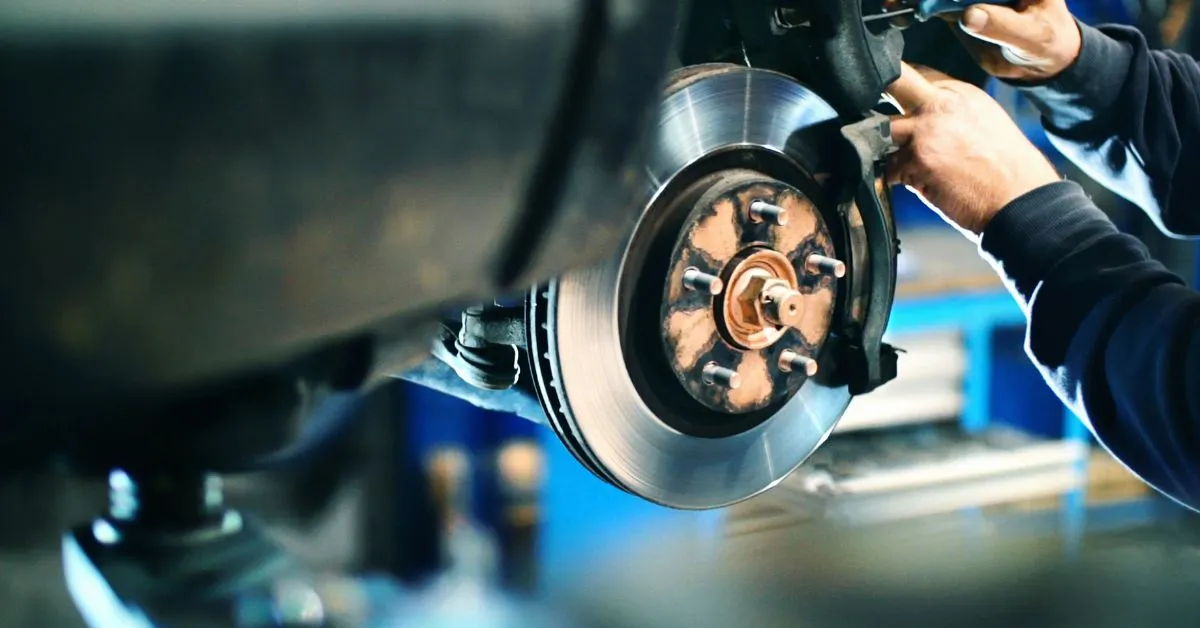
Yes, car brakes will still work if the engine fails. If the engine of a vehicle fails, it does not affect the operation of the power brakes. This is because power brakes are not directly linked to the engine. Power brakes work with the help of a vacuum booster, which uses vacuum pressure from the engine to create an additional force on the brake pedal. However, even if the engine completely fails and loses vacuum pressure, the power brakes will still work for one or two brake applications. After that, the vacuum reservoir will be depleted and the brake pedal will become more difficult to press, eventually requiring a lot more force to stop the vehicle. So, it’s important to exit the road safely as soon as possible if your engine fails and maintain safe speeds with extra braking distance in this event.
Depress the brake pedal firmly:
When the engine fails, the vacuum boost that powers the brake system will no longer function, which means you will need to press the brake pedal much harder than usual. Depress it firmly and hold it in place with both feet if necessary.
Pump the brakes:
If the first attempt at braking doesn’t yield the desired results, you can try “pumping” the brakes. This means quickly releasing and reapplying the brake pedal in rapid succession. This can help generate some residual pressure in the brake lines that can be used to slow the vehicle down.
Look for a safe place to pull over:
As soon as you notice that the engine has failed, begin looking for a safe place to pull over. This could be a wide shoulder, a nearby parking lot, or the side of the road–just ensure that it is free from traffic and large obstacles.
Engage the emergency brake:
Once you have found a safe place to pull over, engage the emergency brake. This brake operates independently of the engine and can be used to stop the vehicle in the absence of power brakes. Pull the emergency brake handle or engage the button and hold it in place until the vehicle comes to a complete stop.
How Much Vacuum is Needed for Power Brakes?
The amount of vacuum needed for power brakes varies, depending on the vehicle’s weight and the amount of weight the brakes are being used to pull. For example, if a vehicle is pulling a trailer of 3,000 lbs. the brakes would need to have a vacuum of at least 6 inches of mercury. The brakes are more effective and easier to operate in cars with disc brakes if additional force is multiplied. The vacuum booster provides this power; cars with a vacuum booster have power brakes.
The vacuum booster is a large, flat cylinder that is easy to locate in the engine. The engine generates a vacuum naturally as it operates in a vacuum booster, while a check valve ensures that air does not enter the booster when it shuts off. The brake pedal shaft passes directly through the vacuum booster to the master cylinder. The vacuum booster has a diaphragm separating the end near the master cylinder from the side near the brake pedal. An ingenious one-way valve connects the two halves of the vacuum booster when the brake pedal is released.
As a result, the engine creates a vacuum throughout the booster, removing air from both halves. In contrast, as soon as the brake pedal is depressed, the valve closes, separating the two. This creates a difference in pressure between Power brakes use a vacuum to assist in braking. The amount of vacuum needed varies depending on the size and weight of the vehicle. Most modern cars contain anti-lock brakes, which further help to increase braking effectiveness and safety.
How Do Power Brakes Work Video:
Frequently Asked Questions
What is a power brake system?
A power brake system is a type of braking system that uses a vacuum booster or servo to amplify the force applied to the brake pedal, increasing the pressure on the brakes and making them more effective.
How do power disc brakes work?
Power disc brakes use hydraulic pressure to create friction between two metal brake discs. When the driver presses the brake pedal, brake fluid is forced through a series of hoses and valves, which in turn activates a piston located within the caliper. The piston pushes against the inner pads of the brake discs, creating friction and slowing down the wheels.
What is a hydraulic brake in simple words?
Hydraulic brakes are a type of braking system that uses hydraulic pressure to create friction between two metal brake discs. When the driver presses the brake pedal, brake fluid is forced through a series of hoses and valves, which in turn activates a piston located within the caliper. This piston pushes against the inner pads of the brake discs, creating friction and slowing down the wheels.
How do power brakes work on an electric car?
Electric cars use a regenerative braking system to slow down the vehicle. This system works by recapturing some of the energy that is produced when the car’s motor slows down. When the driver presses the brake pedal, an electric motor connected to each wheel works in reverse, sending electricity back into the battery and slowing down the wheels.
How does the power brake system work on a car?
The power brake system is an important part of a car’s braking system that helps to improve control and reduce the amount of effort required to stop the car. The system works by using a vacuum booster or servo, which amplifies the force applied to the brake pedal, increasing the pressure on the brakes and making them more effective.
Conclusion
Power brakes are a crucial component of modern vehicles, making them safer and more efficient to drive. Understanding how they work can help drivers maintain and troubleshoot their braking systems. The basic explanation we’ve provided should give you a basic understanding of the mechanics behind power brakes. If you have any concerns or issues with your braking system, it’s always best to seek out a professional mechanic for assistance. Remember, maintaining your braking system is essential for safe and efficient driving. Stay informed and stay safe on the road.
